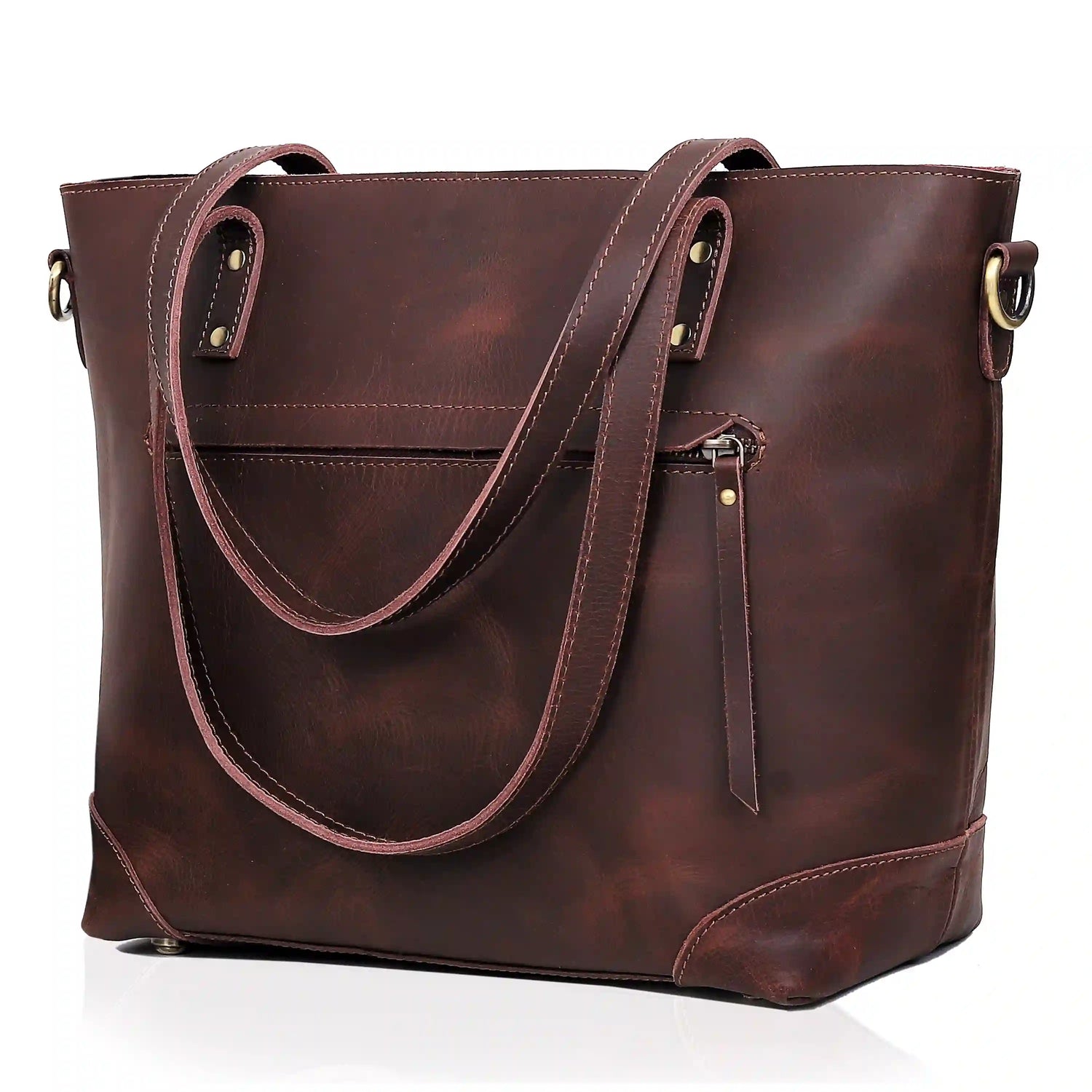However, despite its sturdy appearance, leather is quite delicate, which is what it seems as and when it comes into exposure to water. Moreover, as leather is made from the animal hide, it mainly contains oils that keep it flexible, soft, and long-lasting. However, as and when the water comes in contact with the leather, it washes away these essential oils, making the material quite dull, stiff, and even cracked over time. So, that is the reason why a lot of people talk about why leather should never get wet.
Understanding Leather - Why Moisture Matters?
Leather is made from the animal hide that goes through a special process known as tanning. This process helps in preserving the hide and turns it into a strong and flexible material that can be used for making jackets, shoes, bags, and even furniture. Moreover, as leather is a natural material, it has tiny pores that enable the air and the moisture to pass through. Such pores are what make the leather breathable and soft; however, they also make it vulnerable to water.
As and when the leather gets wet, the moisture seeps deep into its fibers and also changes its entire structure. Water is the main reason that it can push out the natural oils that help in keeping the leather smooth and supple, leaving it dry and stiff once it evaporates. However, not all types of leather react to water in the same manner. Genuine leather and full-grain leather are more durable and can handle light moisture better. However, the soft types, such as nubuck and suede, absorb water easily and get damaged quickly.
Which Types of Leather Handle Water Better?
Full Grain Leather
Full-grain leather is one of the best quality and most durable types of leather, and hence is made from the outermost layer of the hide. It naturally resists the small amounts of water due to its dense fibers, but still absorbs the moisture if left untreated.
Top Grain Leather
This type of leather is slightly more processed than full-grain and hence has a smooth surface that offers mild resistance to moisture. However, this type of leather is not fully waterproof and requires regular conditioning.
Suede & Nubuck
These leathers have a velvety and soft texture that looks beautiful, but are capable of absorbing water very quickly. When these leathers are exposed to moisture, they can stiffen, darken, and even stain easily.
Patent Leather
This type of leather has a plastic-like coating that is glossy, which acts as a shield against moisture. This leather is the most water-friendly leather option and hence can handle light rain too.
How to Dry Wet Leather Safely?
Blot the Excess Water Gently
As soon as the leather gets wet, you must begin by blotting the surface with a dry and clean cloth. Do not rub, as it can damage the texture by spreading the moisture. Your end goal must be to absorb as much water as possible without forcing it deeper into the material.
Let it Air Dry Naturally
If the leather has turned wet, you must place it in a cool and dry area with good air circulation. Do not make use of direct sunlight, a heater, or even a hair dryer, as it can cause the leather to crack, shrink, and even lose its natural oils.
Preventing Water Damage - Smart Protection Tips
Use Waterproofing Sprays or Wax-Based Protectants
Apply a waterproofing spray or a wax coating, as these add a protective layer that helps the water roll off the surface instead of soaking in.
Store Leather Away from Humid Environments
If you place the leather in high humidity, it can cause the leather to absorb moisture from the air, leading to mold, mildew, or stiffness. That is why you must always store the leather items in a cool and dry place and even avoid sealed plastic bags that trap dampness.
Condition Regularly to Maintain Flexibility
When you keep the leather conditioned regularly, it keeps it soft, supple, and less likely to crack after minor water exposure. A good leather conditioner helps in restoring the natural oils and even strengthens the surface barrier.
Take Extra Care in Rainy or Humid Weather
Well, if you live or travel in rainy areas, you must plan by using water-resistant leather accessories. It is quite recommended to carry a protective bag that helps in minimizing damage and water contact.
Caring for Leather After it Gets Wet
Clean the Surface Gently
Once the leather is dry, you should wipe it off with a soft, damp cloth to remove water stains or any kind of dirt. Do not make use of harsh cleaners, as they can worsen the damage.
Apply Leather Cream or Oil
After you carefully clean the leather, the next step is to make use of a high-quality leather cream or oil in order to replenish the natural oils that were lost during the water exposure. This step helps in restoring the softness, prevents the cracks, and even brings back the shine of the leather.
Conclusion
While the leather can get wet, the good news is that with proper care and even with protection, it makes a huge difference in keeping it beautiful and long-lasting. Occasional exposure to moisture doesn’t have to ruin your favourite leather bag, shoes, or jacket - what matters is how you treat it afterward.


